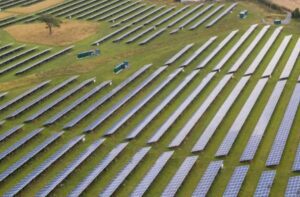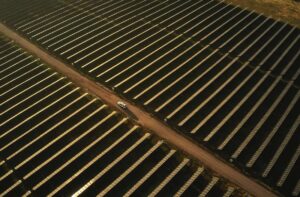The Clean Energy Council has outlined new rules and standards that will allow it to delist rooftop solar modules and inverter products that fail to meet safety and performance standards, or do not deliver on marketing and warranty claims.
The CEC says the new initiatives will allow it to take action against suppliers that fail to meet standards, and it will also introduce a random testing program for solar panels and inverters to ensure that the actual performance of products being sold in Australia live up to their marketing claims.
The initiatives have been welcomed by the solar industry, and are considered long overdue. Australia is ranked as possibly the cheapest market in the world for rooftop solar installations, but that is at least partly because a small, but significant section of the market is, well, cheap in price and cheap in nature.
“The amount of rubbish that is being imported into the country is staggering,” said the head of one wholesaling group. He said the issues were poor quality, relabeled and copied products.
Numerous companies have been caught out. Some installers have collapsed because of the cost of trying to fix poorly performing equipment. It hits the big end of town too. Origin Energy last year said it had to pay out $17 million to repair poor inverters.
And there is much anecdotal evidence about poorly performing products, backed up by a survey by the Clean Energy Regulator which found that 15 per cent of the then 1.3 million solar installations in Australia were of poor quality. (There are now 1.52 million systems in Australia, with total capacity of 4.7GW, or more than 24 million panels).
This situation left the industry exposed when the Coalition government took pot shots at the industry last year over quality issues, with environment minister Greg Hunt raising “safety issues” – even though the CER had found no evidence of safety issues at all, despite 13,000 inspections.
That led to some alarmist stories in the mainstream media that put the issue out of context, as Tristan Edis pointed out in an article in the now defunct Climate Spectator. (from where this graph below is sourced).
While Hunt overplayed the safety issues, it is true that Australian households have installed a higher proportion of “tier 3” panels than other countries.
This trend is now reversing, particularly after the more generous “money-making” premium tariff structures were wound down and because there is a greater push to educate consumers about the need for quality products. Most analysts advice not touching any panel that is not “tier one”. But quality issues persist.
The most significant of the new rules introduced by the CEC appears to be the decision to conduct random and ongoing testing of panels and inverters.
Previously, a manufacturer or importer needed to subject its products to testing just one, on applying for CEC listing – leading to accusations that the organisations were producing a “golden panel” with no scrutiny on the rest of its products.
The CEC, on the prompting of complaints from consumers, will now get an independent panel to test those modules and if they are found to be substandard, will delist the product.
CEC chief executive Kane Thornton said products will also de-listed if suppliers breach consumer law – such as a failing to honour warranties. Delisting means they are no longer eligible for government incentives, and will make them unable to compete on price with better quality panels.
“These changes will improve overall product quality in the solar industry by making sure customers get what they pay for when buying panels and inverters, and by penalising companies that do the wrong thing. Protecting consumers is our highest priority,” Thornton said in a statement.
Thornton said the introduction of other initiatives by the Clean Energy Council such as the Solar Retailer Code of Conduct and the continuous professional development program for solar installers were also helping to progressively improve standards across the industry.
Another initiative is labelling of modules with serial numbers so that the origin can be properly traced. The CEC is also seeking to ensure that the country of manufacturing is also made clear.
Some manufacturers, it seems, liked to pretend that their panels came from elsewhere. Some, it is said, would refuse to reply to requests on maintenance and warranty, but quick to respond on sales enquiries.
Darren Gladman, the head of solar energy division at the CEC, said the new rules were designed to lift standards overall, and were particularly targeted at “fly-by-night” suppliers who might seek to sell “one-off” container loads of cheap and poor quality equipment in Australia.
The changes to the panel listing process are as follows:
- New terms and conditions will allow products to be de-listed from the registers of approved modules and inverters if suppliers breach consumer law – such as a failure to honour warranties.
- An independent testing program will be introduced to ensure the alignment of marketing claims and product performance. Products that fail this program will be removed from the Clean Energy Council’s list of approved products.
- An independent Product Listing Review panel has been appointed.









